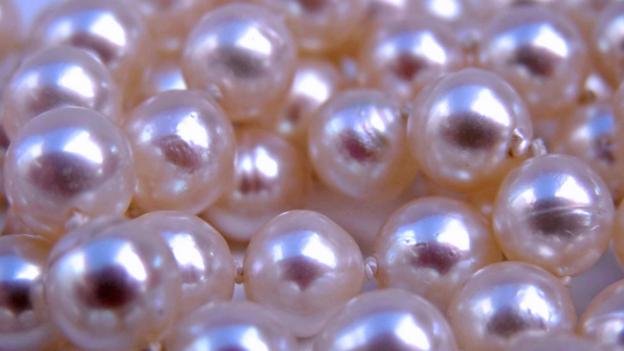We know how oysters make pearls, but how can they be perfectly spherical? A new theory says their remarkable structure allows them to naturally rotate in the shell.
One of the most beautiful and impressive of the many and varied defence mechanisms that occur in nature is the creation of pearls – generated when foreign particles such as sand grains or parasites get inside the soft bodies of oysters, clams or mussels.
When defences are breached, these organisms respond by coating invaders in nacre, a hard iridescent material also known as mother of pearl. The results come in many colours, white, grey, black, red, blue, green or yellow, and their attractiveness has led to traditions of pearl-diving that are thousands of years old. Today, pearls are harvested in oyster farms in the Indian Ocean, East Asia and all across the Pacific, where production is stimulated artificially by inserting round beads into the molluscs to serve as a seed.
Yet in spite of their history and commercial value, we still don't fully understand how pearls form. We know they occur in a variety of forms, such as elongated and ovoid, or the teardrop shape that works well for earrings. Some, called baroque pearls, are irregular, like blobs of solder pinched off at one end. The most highly prized specimens are perfectly spherical.
It's common for pearls to adopt a form called a "solid of revolution" – a shape with perfect rotational symmetry, obtained by rotating a curved line around an axis. These are roughly spherical, ovoid or egg-shaped, but often with bands and rings running around them like a bedknob turned on a lathe. When you think about it, that's seems an odd shape to find occurring naturally.
In fact, scientists have recently confirmed the suspicions of pearl farmers who have long believed pearls with rotational symmetry really are "turned" – that is, they rotate as they grow within the pouch that holds them inside the soft mantle tissue of molluscs. A 2005 report published in the French language Journal des Perliculteurs states that they typically rotate once every 20 days or so. This would explain the rotational symmetry: any differences in growth rate along the axis or rotation get copied around the entire circumference.
But what makes pearls turn? Julyan Cartwright, an expert in crystal growth who works for the Spanish Research Council, and his co-workers, have now come up with a possible explanation.
Ratchet up
Nacre is an astonishing material. It consists mostly of the mineral aragonite, a form of calcium carbonate (the fabric of chalk and marble). The mineral is laid down as microscopic slabs stacked in layers and "glued" with softer organic membranes of protein and chitin (the main component of the insect cuticle and shrimp shell). This composite structure, with hard layers weakly bonded together, makes nacre extremely tough and crack-resistant, which is why materials scientists seek to mimic it in artificial composites. It also reflects light in a manner that creates interference of the light waves, producing the iridescence of mother-of-pearl.
The nacre is made of chemicals secreted by the same kind of cells responsible for making the mollusc's shell. Several layers grow at the same time, creating terraces that can be seen on a pearl's surface when inspected under a microscope. Cartwright and his colleagues think these terraces hold the key to the pearl's rotation.
They say that as new calcium and carbonate ions, or chitin or protein molecules, stick to the step of a terrace and become part of the growing crystal, they release energy which warms up the surface. Water molecules in the surrounding fluid bounce off the step edge, picking up thermal energy as they go. Thanks to the principle of conservation of momentum, this imparts a small force in the opposite direction.
If terrace steps on the surface were just oriented randomly across the pearl, this would average out to zero. But the terraces are arrayed in parallel like lines of longitude on a globe, creating a ratchet-like profile around the circumference of the pearl. Because of this ratchet shape, the small kicks imparted by warmed water molecules act in the same direction, causing the growing pearl to rotate. The researchers estimate the size of this force to be roughly 0.1 newtons – about the weight of a strawberry – for a pearl of 1cm in diameter, which should produce a rotation rate more or less equal to that observed.
The researchers admit that there are still gaps in their argument, but they say that the idea might be applied to make little spontaneously rotating motors. But don't worry: they haven't invented perpetual motion. The rotation is powered by the heat released during the chemical process of crystallisation, and it will stop when there is nothing left to crystallise – in other words, when the "fuel" runs out
.
Courtesy:BBC









No comments:
Post a Comment